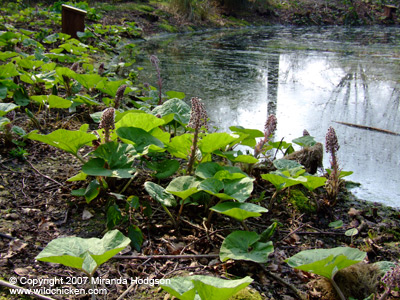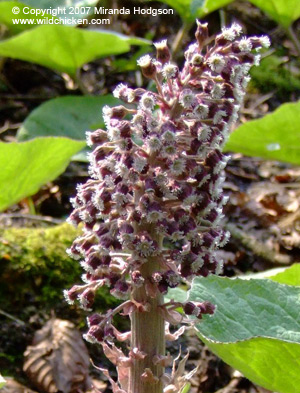


Petasites hybridus (also called Butterbur)
Petasites
hybridus
Hardy, deciduous, rhizomatous perennial, favouring damp stream and pond edges. Petasites hybridus is fast growing and could be a problem in a small garden, but if you have a lot of damp space then it will cover the ground, first with flowers in spring and then with large rhubarb-like leaves in summer.
The plant is dioecious (male and female flowers on separate plants) and, since it is invasive and spreads easily by its rhizomes, it is better to grow only the male plant to prevent spread by seedlings. It is best grown in a large wild garden where it will have room to spread.
Petasites hybridus is attractive to insects, although it is said that only sterile flowers produce nectar.
Flowers in spring, lush foliage in summer.
Habit - fast growing, upright, spreading. Spread of each plant is from 1-3m. Ultimate spread of more than one is unlimited, H: up to 40cm
Leaves - up to 1m across, mid-green and fan-shaped, like rhubarb. Leaves have a wooly covering to the underside. The leaf stems are also rhubarb like and have a pink tinge to them.
Flowers - appearing before the leaves, as early as February in warm areas, but usually in spring to early summer. The flower stem is stocky and clothed in a mass of up to 130 small flowers
Sun, dappled shade or full shade.
Damp - stream and pond margins are favoured.
Fully hardy.
None needed, unless to stop its spread.
No help needed, but divisions succeed at any time of year.
Garden Plant Information list of plant care info by botanical name